Dynamic Stability Systems update
10 months have passed since we reported on the Hugh Welbourn conceived Dynamic Stability System (DSS) – the revolutionary new foil package, that cleverly and simply comprises an athwartships foil that extends to leeward, passing laterally through the hull of a yacht, thereby creating lift, allowing bulb size to be reduced, reducing pitching and dramatically increasing performance. (Read part one and part two of the articles about this).
Following on from the 27ft test boat we sailed in Spain last spring, so now finally a bespoke, fully tricked-up 25ft sportsboat has been launched in Brisbane using the DSS. The 25 has been very much born of Neil Pryde’s HiFi team in Hong Kong. Paul Murphy, a pilot based there, regularly sails on HiFi (which has a Hugh Welbourn hull on it) and the 25 was built in Australia by HiFi’s Boat Captain/Project Manager, Kevin Costin. Previously Costin project managed the built of another Welbourn design – Bill Wild’s 12.8m Wedgetail.
“Paul wanted something that was the fastest possible sportsboat and its run along from there,” states Welbourn of the general concept.
The boat has a distinct skiff-on-steroids look to it, with racks and a retractible bowsprit, but with Welbourn’s typical chined hull – something we have seen as far back as his supermaxi Bols – and of course with the DSS lateral foil. The boat is a full carbon construction and its weight is just 400kg – to put this into perspective it is half that of a Melges 24.
“The first feedback on the 25 is that it has extreme performance, but it is actually straightforward to sail - it is very stable [something that the 27 test boat wasn’t] and when you are sailing with the foil out you have something under you that it feels like a bigger boat,” continues Welbourn.
Since the 27 – which was simply a scaled-down version of the 100ft supermaxi he and Gordon Kay were hoping to build and thus much narrower than it should have been – Welbourn says they have moved on with the lifting foils by three or four generations. The profiles have developed particularly as a result of what he has found out about how hard the foil section needs to work. “It is a question of balancing the particular foil to the particular boat where we have learned a lot. You can overdo the foil just as much as you can under do it, so it is striking a balance. I expect with a bit more sailing we may have a few more minor refinements to do to this boat, but at least straight out of the box it goes rocketing around at up to 16 knots quite comfortably without frightening anybody.”
The launch mechanism for the DSS foil has moved on too. Previously this was on an arrangement like a lateral daggerboard, but on the 25 the foil is moved side to side through the boat via a clamp roller drive, one of the drives being hooked up to a roller furler drum, operated from a line leading out to the cockpit. “This way you can get a shorter foil to go further,” explains Welbourn. “It is a small layer of complication that we didn’t need on the first boat. So you pull it and it goes zooming out one way. You have a ratchet lock that locks it in place – so you can’t fire it out of the side of the boat! When you tack, a couple of heaves on a bit of string and it whizzes out to the other side.”
Compared to the 27, the hull has relatively more beam for its length, but Welbourn says it is otherwise the same hull as on HiFi, that follows on from the tank test data results they gleaned from the model of the 30m supermaxi. “The 27 was literally a scaled version, so it ended up being very long and very skinny. It is not an ideal planing hull, although it got forced to plane whether it liked it or not!” So the inherent stability of the 25 has increased and this makes it a more user-friendly boat without having affected the performance. “The idea is, sure it is a high performance boat, but if you want to sail it gently, can go out with the kids and still rocket around the place at 15 knots.”
Due to its light weight and having a hull of the right proportions under it, the 25 easily out performs the 27 says Welbourn. Even at this early stage without any sail development yet, the boat during its initial trials has been hitting 16 knots downwind in 8-9 knots of breeze. Downwind it should be capable of 20+ knots in 12 knots of breeze. “Upwind – they were doing about 8, but it should have a capability of sailing high slow modes at around 7-7.5 knots, but for the same VMG you have the opportunity to sail at up to 9.5 knots. There is a very flat top to the VMG curve. There are a lot of modes you can sail the boat in.”
The 25 – with the cute name of Brace, Brace, BRACE – is destined to be raced by four crew on the Swiss lakes this summer, but whether the boat makes it there in time for the Mirabaud Bol d’Or in mid-June looks marginal. To make it suitable for the lakes, Welbourn admits he was encouraged to increase the rig height, which he did marginally. “If you go up to the Swiss lakes you need to have a sail that goes from the end of the sprit to the top of the mast to the back end of the boat – the light weather get-you-going sail. But they are using the foil on this boat even in about 3 knots of breeze, because the boat is up to 6-7 knots so quickly. The moment you start moving, it is like a big maxi - your apparent wind builds up and all of a sudden you are rocketing along even when you see hardly any wind on the water. You look for speed and as you get more speed you generate more speed. Even on the 27, which is probably about 650kg, you are using the foil at 6 knots and you can do that in 5 knots quite easily.”
As a result the technique for sailing a DSS-equipped boat will certainly be more akin to other high performance boats such as skiffs and multihulls which benefit from hunting for breeze in marginal conditions, as they are likely to find on the lakes.
The aim of the 25 is to be a demonstrator for a production version. This will still be a carbon fibre boat, but one which is a little more robust and with some streamlining of the build process to make it more cost effective when it goes into production. Welbourn says the likely builders are Ocean Tec in Slovenia, where Richard Tolkien’s Humphreys-designed Class 40, Orca was built and where Welbourn currently has a 50ft DSS-equipped performance cruising boat under construction, due for launch late this summer in time to compete in this year’s ARC. “We are going to look into building the boats out there starting very soon, so we get some boats available up in the European theatre pretty quickly,” states Welbourn.
The 50 looks set to be an interesting boat with much input from the owner, including twin Open 60-stylee companionways and an all-up weight of 9.5-10 tonnes (a TP52 weighs around 8.5 in comparison).
Other DSS projects waiting to have the green light pressed on them are a 36ft production race boat and a 30m performance superyacht that Welbourn describes as ‘a Wally eater beater’, plus several others waiting in the wings.
Welbourn is a little loath to do retrofits until their heavily patented DSS has had a wider take-up on more bespoke boats such as the 25 and the 50 – “changing the world is quite hard work” as he puts it – but their system has been fitted to an existing Thompson 30 sportsboat down in New Zealand (see pics below) with pleased results. The foil system is also currently being fitted with a 40 footer that sails out of the Adriatic. This is a light weight performance boat lacking stability in a breeze and so a good candidate for a DSS retrofit.
2010 we reckon, it lining up nicely to be the year of the foil...
For more information contact Hugh Welbourn here


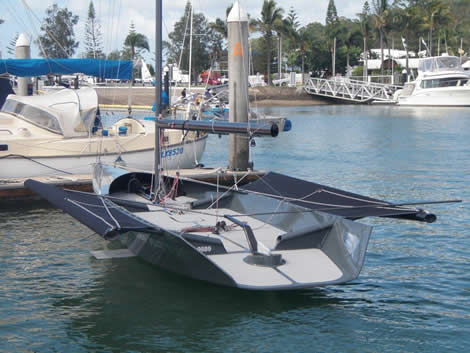
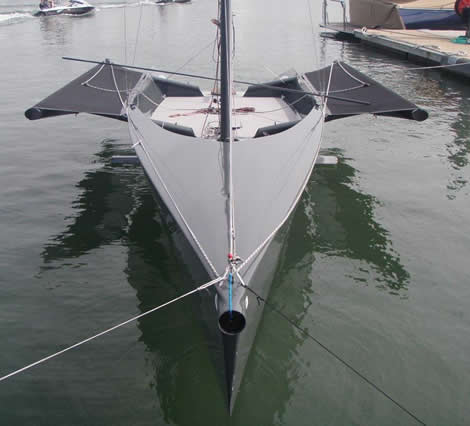
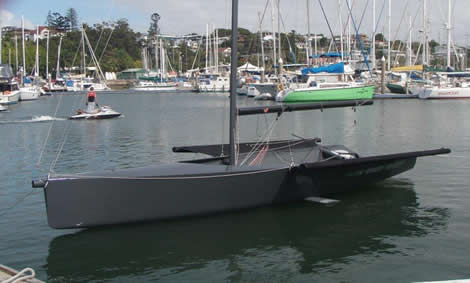
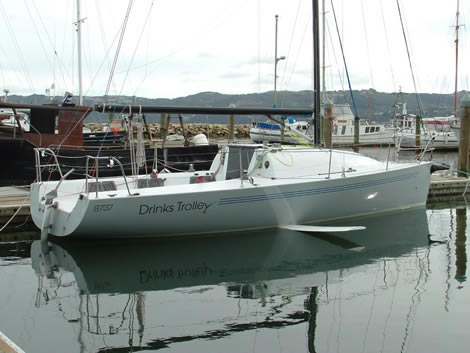
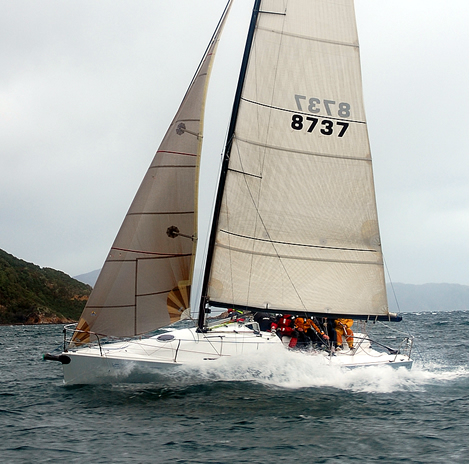







Latest Comments
Mats Ohlsson 28/03/2010 - 07:56
Sir, I'm not sure if this article is intended to clarify the benefits of the DSS system or promote new exciting boats. Rather the latter unfortunately. It would be very interesting to see two identical boats, one with DSS and one without, and really find out the difference in performance. There should be some points of sail where it is better and some where it is not. It would be most interesting to know.Add a comment - Members log in